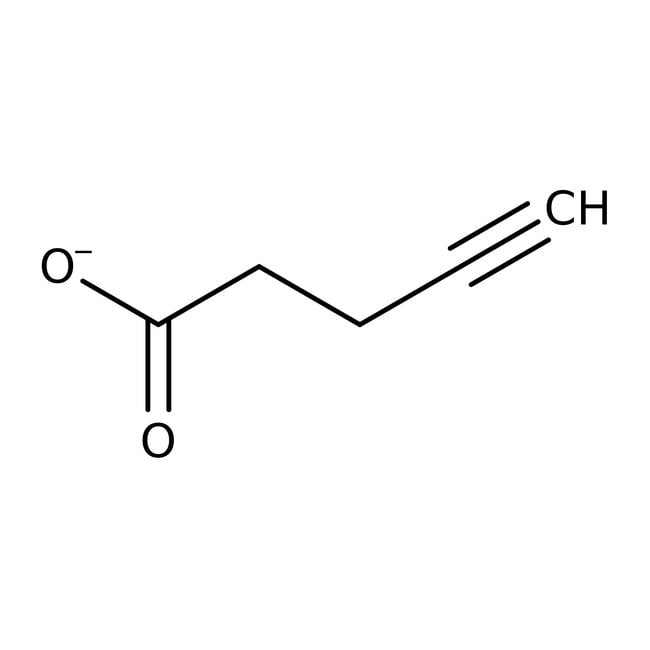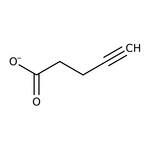Search Thermo Fisher Scientific
Ácido 4-pentinóico, 95 %, Thermo Scientific Chemicals



Ácido 4-pentinóico, 95 %, Thermo Scientific Chemicals
Identificadores químicos
Especificaciones
Descripción
This Thermo Scientific Chemicals brand product was originally part of the Alfa Aesar product portfolio. Some documentation and label information may refer to the legacy brand. The original Alfa Aesar product / item code or SKU reference has not changed as a part of the brand transition to Thermo Scientific Chemicals.
El ácido 4-pentinóico se utiliza ampliamente como un compuesto básico para la síntesis de ocho oligómeros del modelo de secuencia definida. Debido a su triple enlace en el carbono terminal, se emplea como producto intermedio para producir compuestos biológicamente activos. Se utiliza como agente hipoglucémico, que aumenta la tirosina aminotransferasa hepática y la corticosterona plasmática mientras que disminuye el azúcar en sangre en ratas.
Solubilidad
Soluble en disolventes orgánicos de baja polaridad. Soluble en agua.
Notas
Mantener el recipiente bien cerrado en un lugar seco y bien ventilado. Incompatible con bases, agentes oxidantes y agentes reductores.
Figuras
Documentos y descargas
Certificados
Preguntas frecuentes
Citas y referencias
Seguridad y manipulación
Classification of the substance or mixture
CLP classification - Regulation(EC) No 1272/2008
Label Elements
Signal Word
Danger
Hazard Statements
H302 + H312 + H332 - Harmful if swallowed, in contact with skin or if inhaled
H314 - Causes severe skin burns and eye damage
Precautionary Statements
P301 + P312 - IF SWALLOWED: Call a POISON CENTER or doctor/physician if you feel unwell
P304 + P340 - IF INHALED: Remove person to fresh air and keep comfortable for breathing
P280 - Wear eye protection/ face protection
P280 - Wear protective gloves/protective clothing/eye protection/face protection
P301 + P330 + P331 - IF SWALLOWED: rinse mouth. Do NOT induce vomiting
P302 + P352 - IF ON SKIN: Wash with plenty of soap and water
P305 + P351 + P338 - IF IN EYES: Rinse cautiously with water for several minutes. Remove contact lenses, if present and easy to do. Continue rinsing
P310 - Immediately call a POISON CENTER or doctor/physician